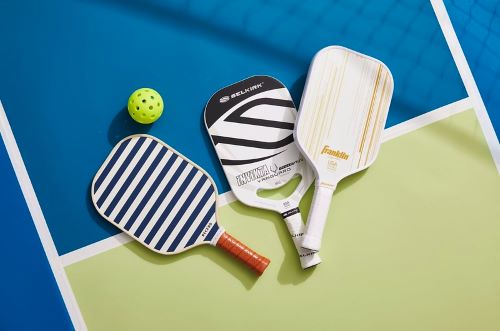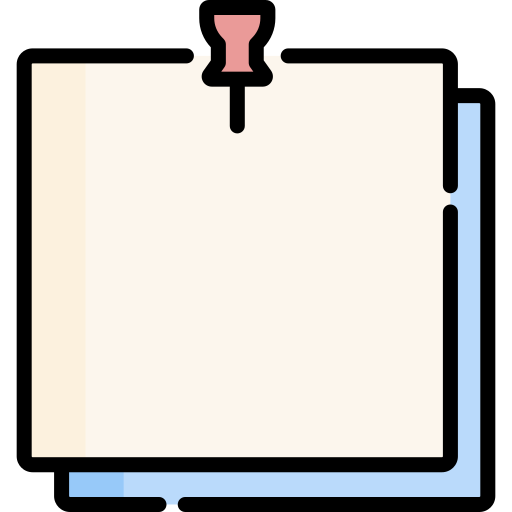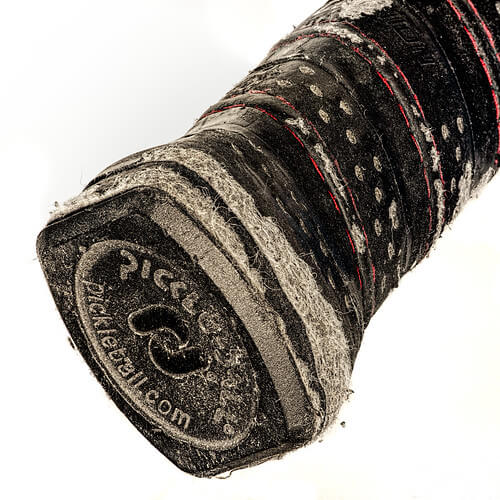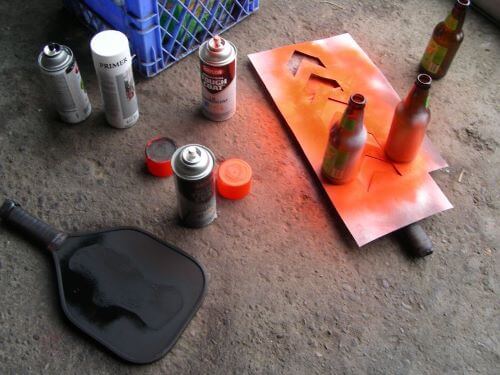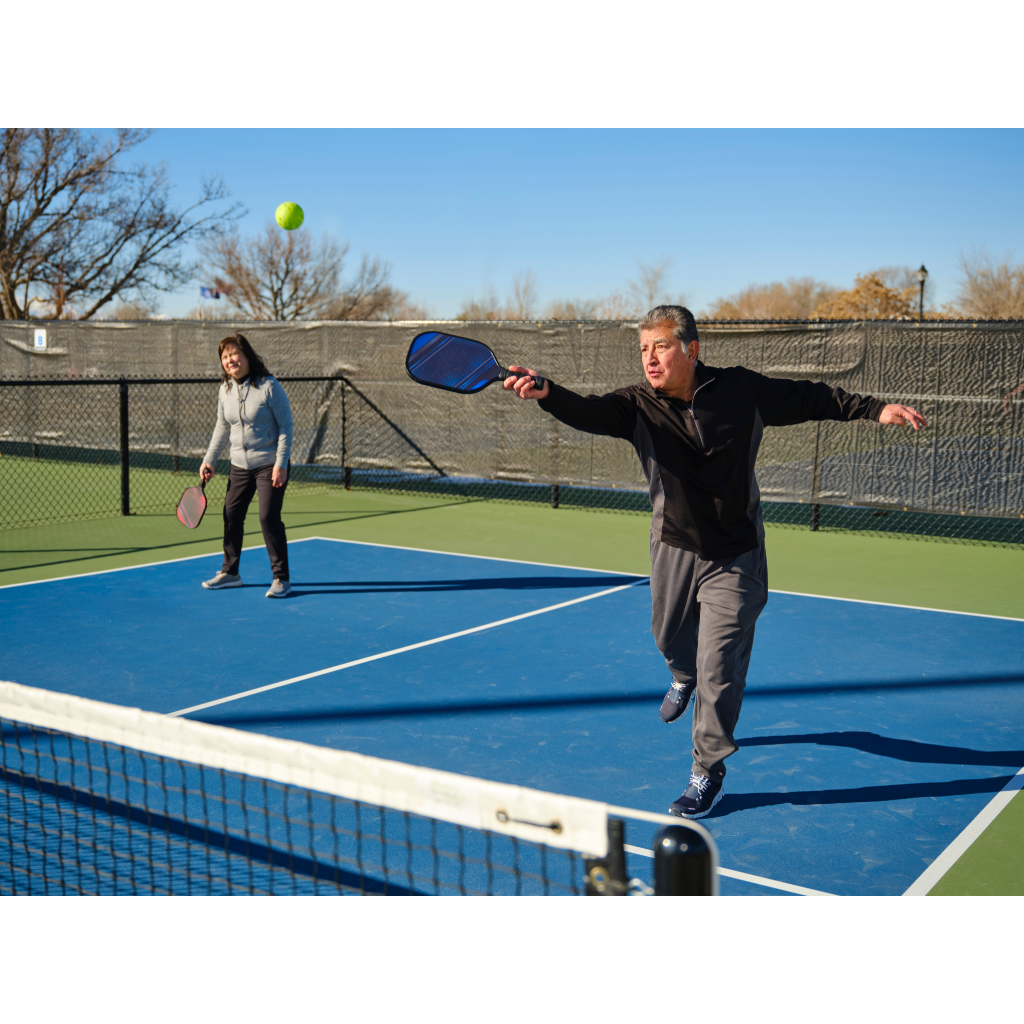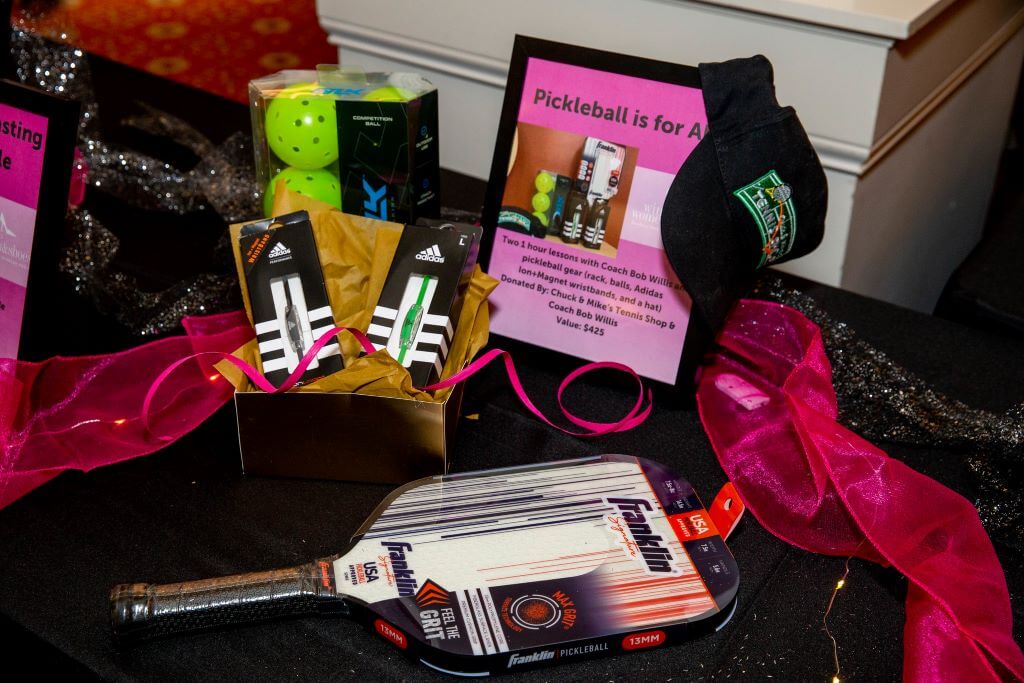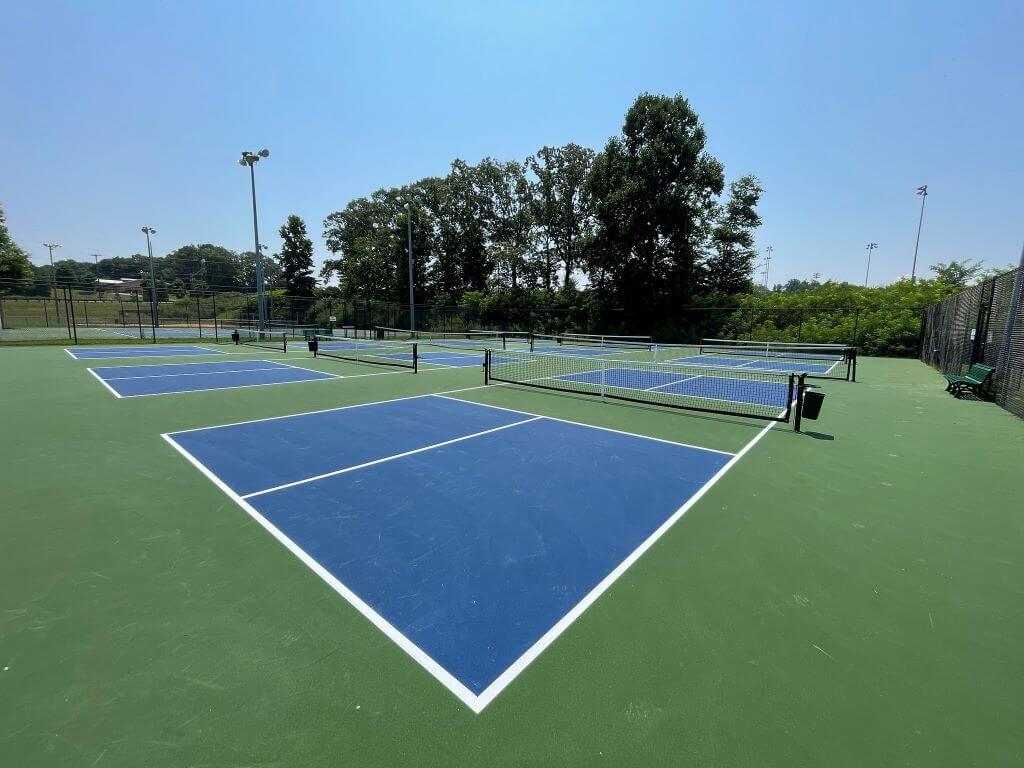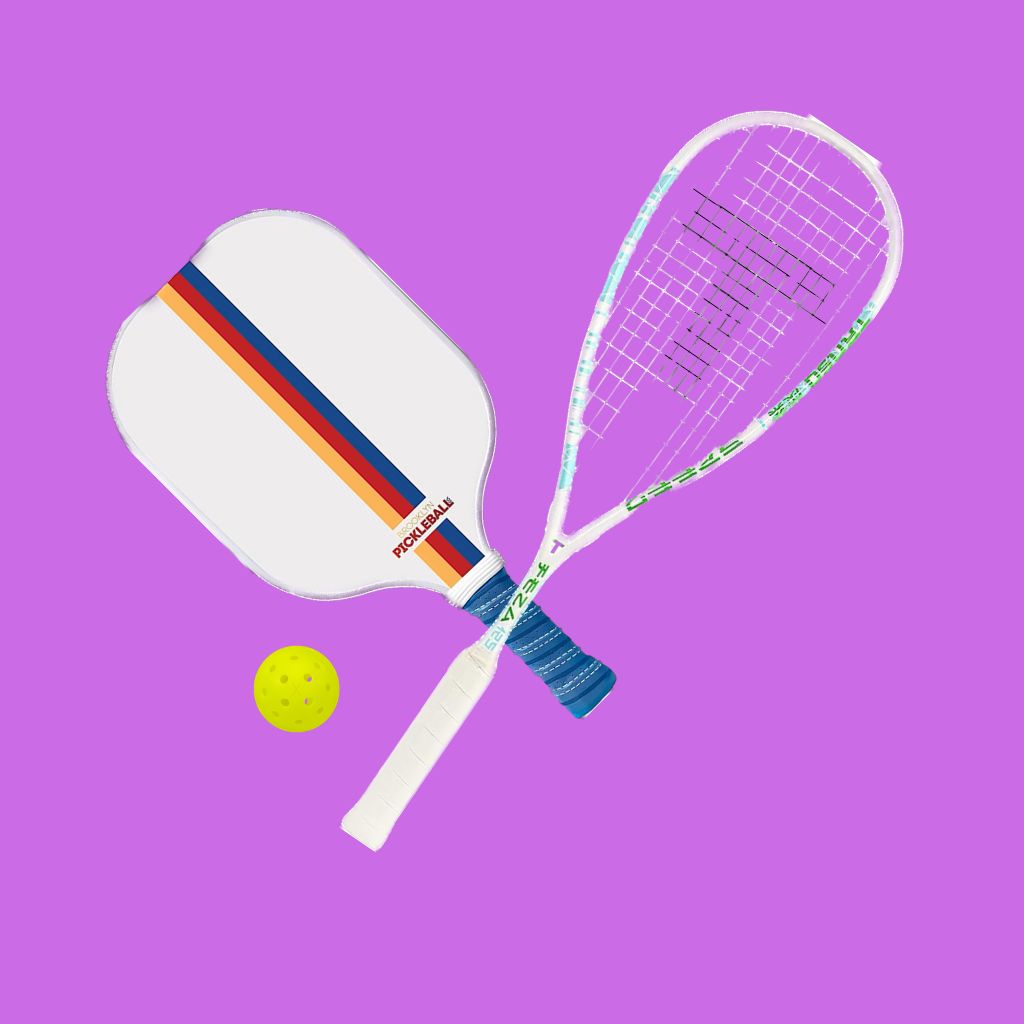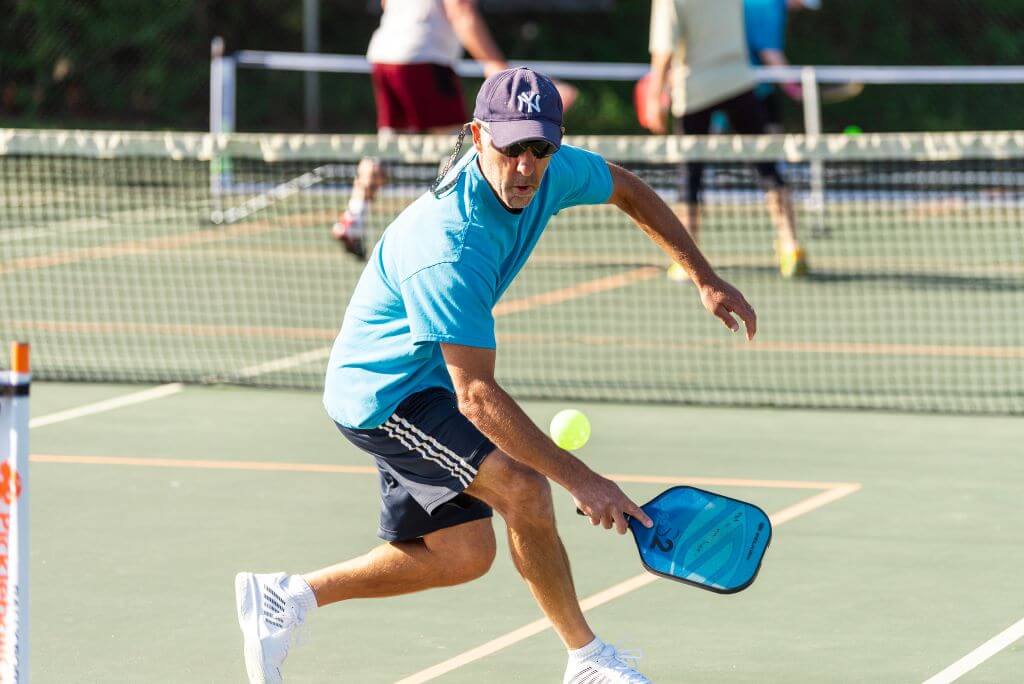If you’re looking for a pickleball paddle, you’ve probably seen numerous claims about graphite, carbon fiber, or composite being the most durable material. But, what does “durable” even mean? I mean, if you’re new to the sport, it would be nice to know how long pickleball paddles last, right?
Well, you’re in luck. This article is a complete, comprehensive guide to answer that very question. Everything there is to know about the lifespan of pickleball paddles is down below. We’ll even bust a few myths.
How Long Do Pickleball Paddles Last For?
Pickleball paddles last between 1 to 5 years, depending on the intensity, care, and frequency of use.
Players who play the game religiously and competitively will need to replace their paddles after 1 to 2 years. In fact, pro players are known to change their paddles every 4 to 6 months. If we take into account that pro players practice at least 5 out of 7 days, we can then estimate just how long your paddle will last for.
This goes into my next point:
Your Paddle’s Lifespan Depends on Your Playstyle
Your playstyle is the ultimate factor in your paddle’s lifespan. Even expensive paddles won’t last a year under intense and frequent use—especially if it isn’t taken care of properly. On the other hand, if you’re a casual pickler who plays on the weekends with your partner or parents, then even a cheap paddle will last you several years with the proper care and maintenance.
Here’s a great rule of thumb you can refer to for determining the lifespan of your paddle:
| Type of Player | Hours per Day | Days per Week | Paddle Lifespan |
|---|---|---|---|
| Professional | 2-4 hours | 5 days | 4-6 months |
| Regular | 1-2 hours | 2-3 days | 8-15 months |
| Hobbyist | 1-2 hours | 1 day | 18-30 months |
| Occasional | 1-2 hours | 1 day every 2 weeks (or once a month) | 36-60 months |
In a perfect world, this is how long your pickleball paddle will last for. But, this isn’t a perfect world. There are several mistakes inexperienced beginners—and even experienced players do—that can reduce the lifespan of their paddles. We’ll talk about these mistakes in-depth below, and also highlight how you can care for your paddle and prolong its lifespan.
But first, let’s figure out how to tell if your pickleball paddle is dead.
How to Tell if Your Pickleball Paddle Is Dead?
Learning how to tell if your pickleball paddle is deceased is an uncommon skill that only comes to experienced players. If you’re a beginner, you need a guide to help you assess the state of your paddle.
How a Dead Pickleball Paddle Looks Like
The appearance is the first dead giveaway of a dead pickleball paddle. You can easily check for cracks, dents, or warping on the surface or sides of your paddle face. Generally, the first two things that break in a paddle are either the edge or the face. Look for:
| Type of Damage | Description | Can it be Fixed? |
|---|---|---|
| Cracks or chips in the paddle face | Visible cracks or chips on the surface of the paddle, which may affect its performance | ? |
| Delamination | Separation or bubbling of the paddle layers, which can cause the paddle to lose its stiffness and affect its performance | ? |
| Warping | Uneven surface of the paddle due to warping, which can affect your ability to control the ball | ? |
| Loose or damaged edge guard | A protective edge guard that is loose or damaged, which may result in damage to the paddle | ? |
| Loose grip | A loose grip that affects your ability to grip the paddle properly and control the ball | ? |
If you have a loose grip or a damaged edge guard, there’s a good chance you can still fix this. We’ll provide a short guide to fixing your pickleball paddle towards the end of this article.
For now, let’s focus on the not-so-obvious signs that your pickleball paddle is dead.
How Does a Dead Pickleball Paddle Perform?
A dead pickleball paddle will lose its stiffness, reducing the power, spin, and control in your strokes. The sweet spot (area that strikes with the most power and control) will either be smaller and reduced or completely gone.
These are the types of invisible damages that usually result in a badly performing paddle:
| Type of Damage | Description | Can it be Fixed? |
|---|---|---|
| Core Damage | Damage to the internal core of the paddle that can affect its performance and durability. This damage may appear as a dent, crack, or break in the internal structure of the paddle. | ? |
| Hairline Fracture | Small, invisible cracks that can weaken the paddle over time and affect its performance. These fractures may open up during play when hitting strong strikes, reducing the paddle’s stiffness and performance. | ? |
| Soft Spots | Areas of the paddle that become compressed or lose their shape over time, leading to reduced performance and durability. These spots may not be visible to the naked eye, but can be felt during play. | ? or ? (depending on severity) |
The Sound of a Dead Pickleball Paddle
One of the dead giveaways (pun intended) of a dead paddle is actually the sound. New, stiff paddles have a loud or sharp “pang”. This is especially true if you hit the ball in the sweet spot. Dead paddles on the other hand sound duller, deeper, and are more of a “thonk”.
You can easily do a sound test of your paddle by hitting a pickleball in place. Let the ball bounce all around the paddle face and keep your ears actively listening for any dull or different sounds. Dead spots can appear anywhere, so the sound you hear should be consistent across the entire paddle face
Aim to hit the ball around 1 to 2 feet in the air. Keep the height consistent as best as you can.
You should hear a sharp sound consistently throughout the entire paddle face. If nothing is wrong with your paddle, then the pickleball will bounce at the same height throughout the entire routine.
How Does Your Dead Pickleball Paddle Feel?
Dead paddles are no longer stiff. They don’t resist the ball as much when you strike, especially when you’re returning a ball in an actual game. If you feel like your paddle isn’t powerful anymore, it could either be damaged or totally dead.
Alternatively, you can also do a physical check by rubbing your fingers across the paddle face. Look for dents, soft spots, and any kind of physical deformation that can’t be easily seen.
Is Your Pickleball Paddle Dead?
If your answer is yes, now would be the time to find another paddle online. We have a complete guide on the best pickleball paddles on the market right now. We’ve even published an article on elongated pickleball paddles.
How to Prolong the Life of Your Pickleball Paddle?
Now, if your paddle is still alive, or if you simply want to learn how to take care of your pickleball paddle and prolong its lifespan, keep reading.
-
Clean Your Paddle Religiously
Cleaning the oil, sweat, and grime off your paddle goes a long way. Even though your paddle face is durable, bacteria and dirt build-up will deteriorate your paddle at a faster rate. Although carbon fiber, graphite, and composite materials are not porous (ability to absorb liquid) naturally, these materials will still absorb your sweat or oil with enough time.
The best way to clean your paddle is to simply wipe the surface with a damp towel or microfiber cloth. Slightly wet, but not dripping. Doing this frequently enough will eliminate the need for deep cleaning over the long-term, which is generally harmful for your paddle.
Don’t use excessive water or soap when cleaning your paddle. You don’t want any liquids to seep into your paddle. Water damage will deteriorate the strength of your paddle easily, especially if the water doesn’t dry quickly.
-
Store Your Paddles in The Right Place
Hot temperatures or moist, damp storage compartments are a big NONO. A paddle exposed under the scorching heat of the sun or microwaved inside a hot car will have the glue, adhesive, and materials deteriorate faster. Heat will expand the molecules of your paddle, loosening and warping the material. This will cause delamination, warping, and even cracks when the paddle cools down from the heat.
On the other hand, damp storage that causes severe mold will destroy the integrity and strength of the paddle’s core and stiffness. This is a common problem for occasional players or hobbyists, since they don’t regularly use their paddles.
The right place for a paddle is somewhere cool and dry. Storing your paddle deep inside your bag around dry clothes is good enough until you get home. Avoid mixing your paddle with your wet, sweat-drenched clothes. Once you’re home
You don’t need to overcomplicate using the “right” storage. Avoiding the severe cases of wet and heat is more important. This is also why we don’t recommend buying a paddle cover unlike other articles. More on that later.
-
Do Celebratory Paddle Taps Lightly
Paddles are made to hit the pickleball, not other paddles. Pickleballs are much lighter and softer compared to paddles—so celebrating by hitting your paddle with your opponent’s is not the best idea.
Still, we don’t want you to avoid tradition. Tapping paddles shows great sportsmanship and shouldn’t be frowned upon. JUST make sure to tap paddles lightly.
Alternatively, a healthier, rising tradition that even pro players do now is to use their hand to their opponent’s paddle. A variation of this during doubles is when all four players tap each other with the ends of the paddle.
-
Be Gentle With Your Paddle
On the same note as above, being gentle with your paddle goes a long way. Pickleball players who come from tennis will find this a foreign concept at first, because tennis racquets are very durable.
Not only are tennis racquets heavier and made with more material, pickleball paddles are inherently weaker because they are flat sheets of material. When the paddle flexes, the risk of the entire sheet bending and deforming is bigger than with tennis racquets.
So, don’t use your paddle to hit the net, court, or ground. It’s not a good look anyway. Don’t throw it around, whether it’s to your bag, at the backseat of your car, or to somebody. Your paddle could very well be one tough landing away from dying. Lastly, don’t lean on your paddle. I know it makes you look cool, but your poor paddle carrying your weight doesn’t think it is.
Pickleball Paddle Myths About Taking Care of Your Paddle
While researching about this topic, I came across two “tips” about taking care of your paddle that aren’t real. So it’s time to bust them!
Myth #1: Buying a Paddle Cover
Paddle covers are meant to protect your paddle from extreme temperatures and scratches or damage while in transit.
However, I don’t recommend buying one immediately because most bags can protect your paddle without a problem. If you’re an enthusiast and have pickleball gear, almost all pickleball bags are sold with a separate compartment for your paddle. The compartment alone is already enough to keep your paddle dry and protected from extreme heat.
What if you don’t have a pickleball bag? A bag with a laptop compartment will solve your problem. You won’t be the first person to do this.
If, however, you’re carrying multiple paddles or simply don’t have a bag with a separate compartment, then I wholeheartedly recommend buying a paddle cover. But that’s pretty much the only time I would recommend it. Using it to protect your paddle from extreme heat is a stretch, since a normal, dry bag will do this well enough.
Myth #2: Rotate Your Paddle To Increase Its Lifespan
Rotating your paddle to let it “rest” and “recover” is simply a myth.
The material inside your paddle is not self-healing and will not “recover” with rest. The whole notion that using two paddles and rotating between both will extend either lifespan is simply wrong. Think of it this way, hypothetically a paddle that’s rated for 2,000 swings will only last 2,000 swings. Letting it rest and “recover” between games will not increase that to 2,100 or 2,200 swings. The material simply can’t physically heal through rest.
Buying one paddle at a time is better because of:
- Cheaper upfront cost (1 paddle is cheaper than buying 2)
- Lessens the chance of buying two of the same paddles that are actually low-quality
- Lessens the duration between your next, better paddle (since technology gets better over time)
Does that mean rotating pickleball paddles is without benefits? Not really. There are a bunch of good reasons why you should rotate your paddles. It’s just that extending the lifespan is not one of them.
Why Do People Say Rotating Your Paddle Increases Its Lifespan?
The argument for rotating your paddle to prolong its lifespan often uses the analogy of car tires. You rotate car tires so that the tires last longer.
While this is true, it’s only correct because you want all 4 tires to deteriorate at the same pace, because a set of tires is sold in 4s. The household practice is to buy 4 tires at a time, not buy 2 front tires and then after several months, buy 2 rear tires.
The same way you drive with 4 tires at a time is the same way you play pickleball with only 1 paddle. The car-tire equivalent of buying 2 pickleball paddles and rotating them is like buying 2 sets of tires (8 tires) and then alternating between the 2 sets so that both deteriorate slower.
Yes, buying 2 paddles and rotating them will deteriorate the paddles slower. But it will not increase the lifespan of the paddle. 1 paddle worth 2,000 swings is still 2 paddles worth 4,000 swings. The lifespan does not increase. 2 paddles delay the inevitable, it doesn’t extend it.
Where Did This Myth of Rotating Paddles to Increase Lifespan Start?
There’s no real source for where this myth started, but there’s enough reason to believe that it is mainly inspired by tennis.
In tennis, it’s common for players to rotate between racquets. But the reason for doing so is not to “extend” the lifespan of the racquets, but to use the racquet’s lifespan effectively while it’s there. I wrote a whole article on this myth and why it’s wrong, so check that out if you’re interested in how this sport superstition came together in the first place.
How to Fix Your Pickleball Paddle?
Back to taking care of your pickleball paddle and extending its lifespan. If you did an inspection and found something broken, then how can you fix your pickleball paddle?
DIY fixing for your paddle is pretty much limited to repairing the edge guard and tightening the grip. Outside of that, there’s almost no way to fix your paddle on your own, without deliberately reconstructing it from scratch.
You can fix and repair the edge guard of your paddle using glue. Two-part epoxy is best for carbon fiber, graphite, and composite paddles. It’s waterproof, resistant to hot temperatures, and can withstand heavy stress. If you don’t have that, superglue also works but it’s more brittle and most superglues are not waterproof. For wooden paddles, wood glue is best.
Repairing the paddle grip is more complicated because there are different types of grips out there.
| Grip Type | Purpose | How to Repair |
|---|---|---|
| Replacement Grip | Replace the worn or damaged grip that came with the paddle | Remove the old grip and install the new grip by sliding it over the handle and securing it in place. |
| Wrap Grip | Add a layer of cushioning and/or customization to the handle of the paddle | Remove the existing grip, clean the handle, and wrap the new grip onto the handle, securing it in place with adhesive or tape. |
| Overgrip | Provide additional grip and/or cushioning to the existing grip of the paddle | Apply the overgrip by peeling off the backing and wrapping it around the handle, starting from the bottom and overlapping each wrap slightly until the handle is covered. |
How Long Do Different Pickleball Paddle Materials Last
We’ve already provided a rough estimate of how long a pickleball paddle should last for all kinds of players. But, how much will the estimated change with different paddle materials?
What’s the Best Material for A Durable Pickleball Paddle?
There are 4 main materials that pickleball paddles are made of and they aren’t made equally.
| Material | Durability |
|---|---|
| Carbon Fiber | Carbon fiber is the most durable material for pickleball paddles. It is incredibly strong and lightweight, making it ideal for high-performance paddles. |
| Graphite | Graphite is also a highly durable material that is often used in high-performance pickleball paddles. |
| Composite (generally synonymous with Fiberglass) | Composite paddles are made from a blend of materials, including fiberglass and polymer. Some composite paddles also use carbon fiber and graphite though. |
| Wood | Wooden paddles are the least durable option for pickleball players. |
Top Brands for Durable and Long-Lasting Pickleball Paddles
While understanding what material is molecularly more durable than the other is important, how these materials are used is more crucial. This is why some brands are better than others and why some paddles are inferior to others paddles despite being made with superior materials.
It’s why we recommend buying paddles from reputable brands, more so than just judging a paddle by the product description. We have a whole article written about the top brands for durable and long-lasting pickleball paddles, so check that out when you’re done.


